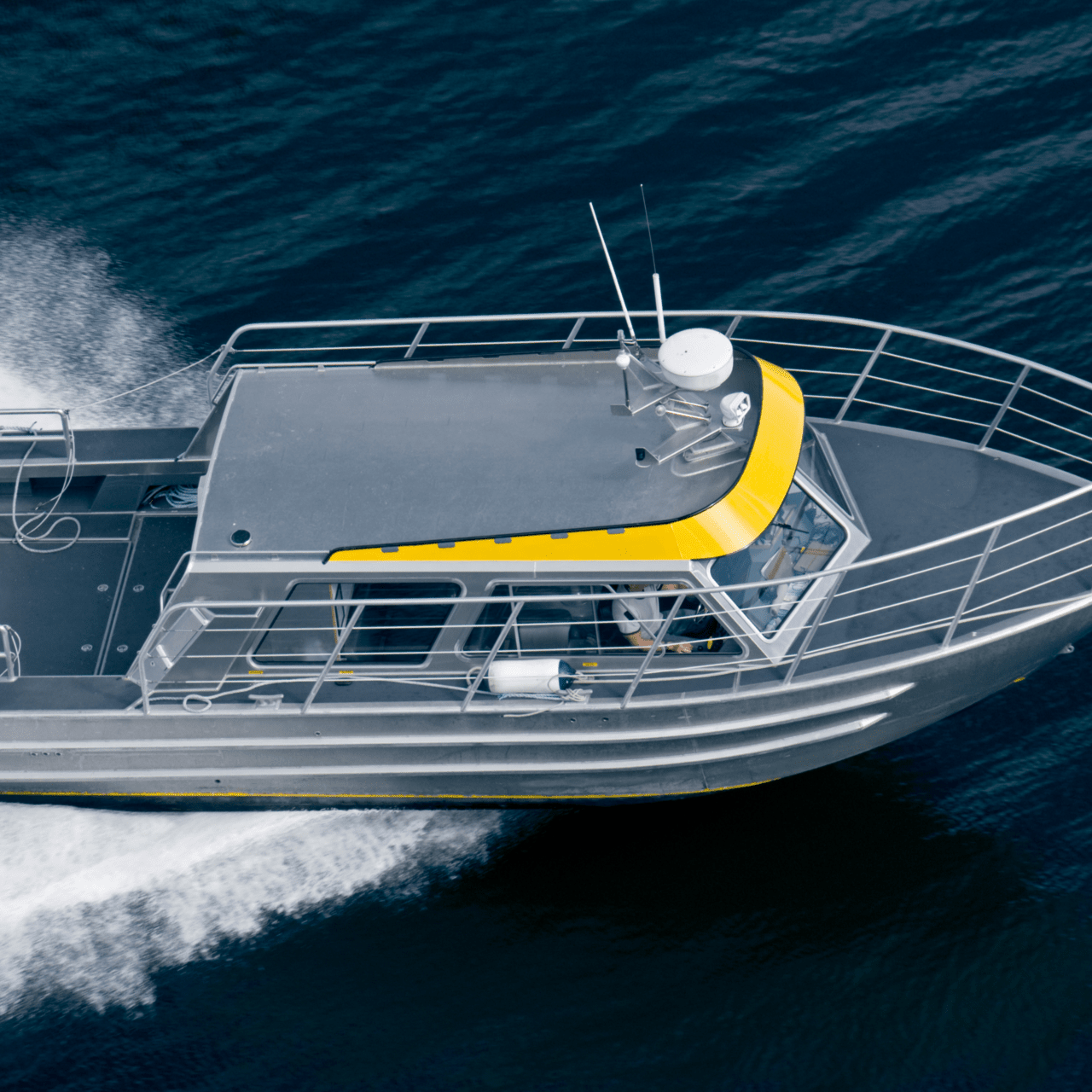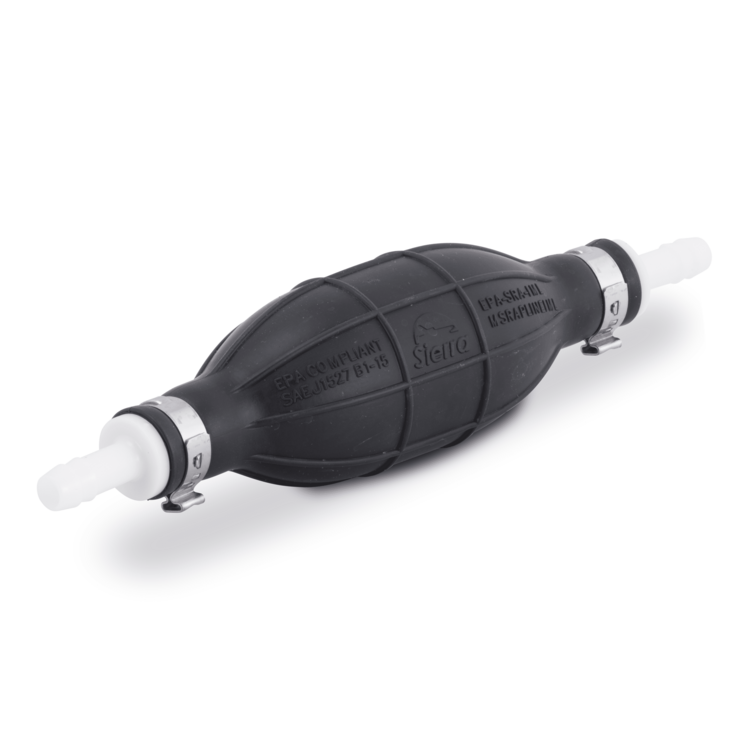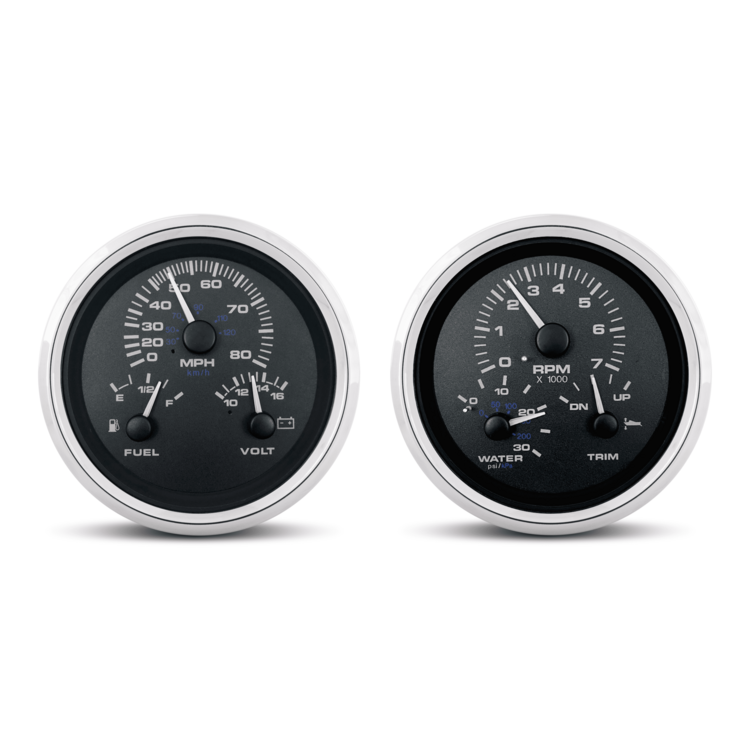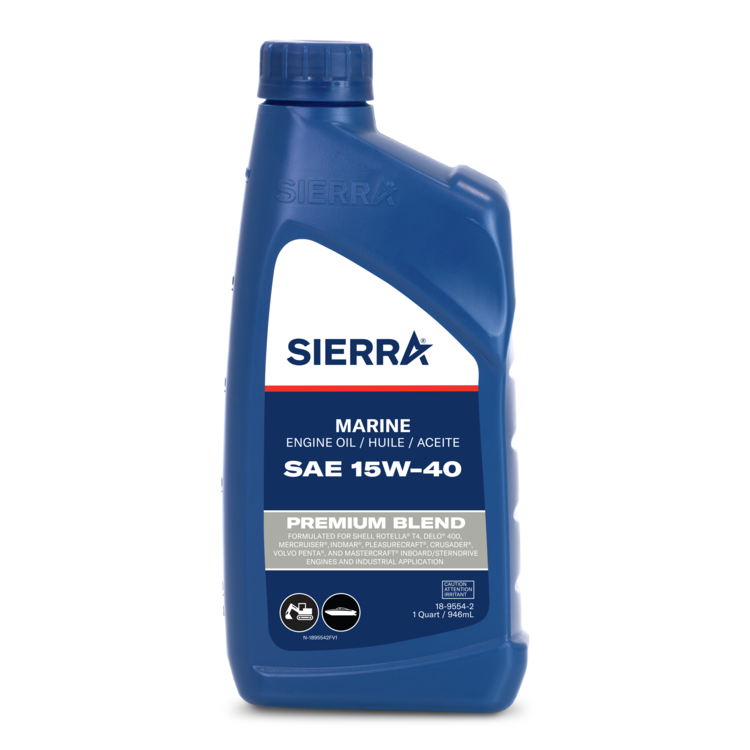
Understanding the Differences Between Aluminum and Fiberglass Boats
If you’re in the market for a new or used boat, one of the decisions you’ll face is choosing between an aluminum hull or one built from fiberglass. Understanding the differences between the two materials is an important consideration for any boater. Both materials have advantages and drawbacks. What matters is that you end up with the best vessel for your lifestyle, budget, location, and intended uses.
In this post, we’ll cover some common benefits and considerations for each material and why you might choose one over the other.

Aluminum boats
There are several reasons why an aluminum boat might be the best choice for you, starting with cost. Generally speaking, aluminum watercraft are lighter and less expensive than fiberglass boats. Less weight means they can be powered by smaller, less expensive, and more fuel-efficient outboard motors. This not only makes aluminum boats more affordable to buy, but it also means they’re more affordable to use. If you’re an angler who likes to hit the water every weekend, but you don’t have an endless fishing budget, a “tin boat” might be exactly what you need.
Aluminum construction is widely used in a variety of popular boat styles. Pontoons, for example, are ideally suited to aluminum construction - combining a large, stable, and roomy platform with the ability to perform well with relatively smaller engines.
Aluminum bass boats also allow anglers to get in the game without having to drop $50,000-plus for a high-powered rig and an expensive tandem axle trailer. Advancements in design and painting have some of these boats performing and looking so good that they’re often mistaken for fiberglass.
Another popular category is the aluminum “Fish ‘N Ski” lake boat which combines enough room to fish, a walk-through windshield, bow seating, and enough performance for watersports activities.
Maintenance on aluminum boats
Whatever the style, there are some general preferences when it comes to aluminum boats. Welded construction is preferable to rivet. After years of pounding over waves, sliding on and off trailers, and exposure to the elements, rivets can loosen and cause small leaks. Painted aluminum hulls are attractive and stylish, while some boaters prefer the commercial look of bare aluminum. Painted hulls require more maintenance while bare aluminum will form a patina of light oxidation over time - creating that battleship gray color.
Aluminum watercraft offer additional advantages for those who store and transport their boats on trailers. Lighter boat, motor, and trailer combinations can be towed without using a high-powered vehicle. You may be limited to certain types of boats based on your vehicle’s towing capacity. Not everyone has a heavy-duty diesel 4X4 with a 10,000-pound towing capacity. If this is the case for you, going with an aluminum hull can help narrow your search.
Downsides of aluminum
Aluminum boats are a great option for a variety of boaters, but there are some potential downsides to consider. The lightweight construction of aluminum also means that your boat might be more prone to dents compared to fiberglass. There are limitations to aluminum hull construction which means you won’t see the sleek lines and curves that are more common on fiberglass vessels. A lighter hull also means that boaters might feel a little bit more of the water. Boaters who use and keep their aluminum craft in saltwater might also experience more corrosion over time.

Fiberglass boats
Fiberglass can be easily molded into a variety of shapes and contours for nearly endless hull design options. The versatility of fiberglass designs means these vessels are often highly customized for specific purposes.
Lifting strakes for better hole shot, reverse chines for stability, stepped hulls for speed and performance, and tumblehome for drier rides are just some of the many design benefits found on fiberglass hulls.
Fiberglass boats are heavy, sturdy, and ride well in rough water. Their weight requires considerably more power to operate. But a sleek center console with three or four giant outboards is bound to turn some heads.
Some popular examples of hull variations include flats skiffs designed to run and drift in mere inches of water, deck boats that provide pontoon-like utility with eye-watering performance, mega-center consoles for offshore canyon runs, and power catamarans that slice through waves at freeway speeds.
Sparkly bass boats aren’t only dazzling to look at, their high-performance hulls rise out of the water and can reach speeds of 70-plus mph. And when it's time to fish, they offer a wide stable platform with all the storage room serious anglers need for electronics and tackle. Similar design options are available for decks and topsides, creating a wide range of cockpit styles, seating arrangements, built-in amenities, and features for different boating activities.
Fiberglass maintenance and aesthetics
Shape and form are key advantages of fiberglass. Styling lines are often curved, flowing, and elegant, as opposed to the more angular, industrial designs of aluminum boats. Gelcoat colors used to be only some variation of white or eggshell. Now boat hulls come in a wide range of pastels, dark blues, blacks, and other attractive colors - allowing boaters to explore their sense of individuality.
Gelcoat is the outermost visible polymer layer applied to a fiberglass hull. It will need to be periodically cleaned and waxed to remove natural oxidation. This also helps the boat maintain its original luster. Gelcoat is also subject to scratches and gouges over time, so you’ll need to learn some gelcoat repair skills if appearance is important to you.
A properly maintained fiberglass hull can last indefinitely — especially modern “no wood, no rot” all composite construction. Their durable construction and corrosion resistance make fiberglass boats a good choice for those who keep their boats in the water.
Downsides of fiberglass boats
Some of the benefits of fiberglass might be perceived as downsides, depending on the environment you live in and the types of activities you want to do on the water. Fiberglass hulls are generally heavier than aluminum. A heavier boat can require a bigger engine and more fuel to operate. And, you need to consider how much weight your car can tow if you need to move the boat in and out of the water frequently.
A fiberglass vessel may come with new construction features and interesting designs, but they’ll generally cost more than aluminum boats. Regular maintenance and cleaning are required to keep that fancy finish looking like new.

Choosing between aluminum and fiberglass boats
There are clear differences between aluminum and fiberglass boats. And, there are a few questions to consider when deciding between the two materials. How much are you able to spend? What kind of water do you boat in? What kind of activities do you plan to do? What do you want your boat to look like?
If you’re more conscious of total cost, you might consider an aluminum boat. Fiberglass options are generally more expensive to buy and operate. An aluminum build may be lighter overall which can make transportation easier. Heavier boats require more powerful vehicles to move in and out of the water.
Your environment can also influence your decision. Saltwater is tough on boats. You’ll likely spend more on maintenance if your boat lives in saltwater full time compared to freshwater. However, a fiberglass hull will last longer in the water. A cheaper aluminum boat might be a great fit if you’re looking for a freshwater fishing boat, while a fiberglass boat can be a great all-around option for exploring, entertaining, fishing, and water skiing.
It’s important to remember that your boat should match your budget, lifestyle, environment, and water activities. Your local boat dealer can help guide you to an option that feels right for you and local marine shops can help educate you about maintenance and replacement parts for your boat.
And when possible, get behind the wheel and experience the difference between aluminum and fiberglass for yourself.






Leave a comment